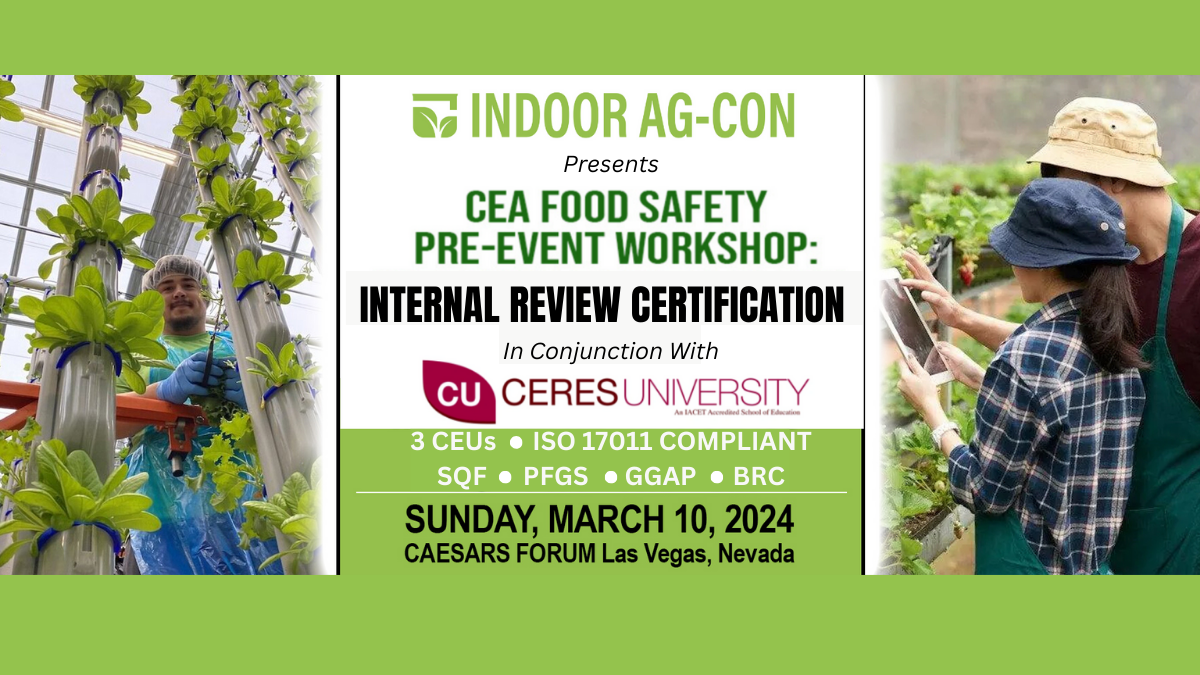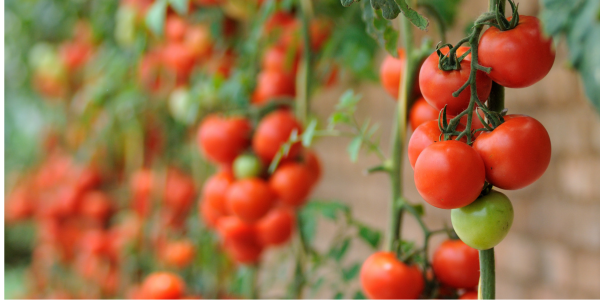Navigating Food Safety through Internal Auditing in Controlled Environment Agriculture
Indoor Ag-Con will host a CEA Food Safety Pre-Event Workshop in conjunction with Ceres University on March 10, 2024, the day before the March 11-12, 2024 edition opens at Caesars Forum in Las Vegas. Leading up to this session, this column explores key issues and actionable improvements you can implement for your food safety and food quality processes. This month, Dr. Karl Kolb, President of Ceres University and Ceres Certifications, International, shares insights into the invaluable internal audit process.
—————————————————————————————————————————————
“At its simplest, internal auditing involves identifying the risks that could keep an organization from achieving its goals, making sure the leaders know about these risks and proactively recommending improvements to reduce these risks.”1
This statement says it all. The function of internal review, auditing, inspection or assessment is to assess risks and ensure they are eliminated, controlled, or mitigated. In the food industry we may not be able to eliminate all risks but we can control them or mitigate the effects of a known hazard.
All GFSI audits desire qualification in three things, HACCP, PCQI and Internal Auditing. Every QA team needs at least one person qualified in one of these three subjects. Given the type of factory, other qualifications may be necessary but Internal Auditing will always be the top of the “need to have” list.
There are two questions that seem to rise to the top of the list when this topic is discussed. “What to inspect?” and “How to inspect?”
But before we dive into these two questions let’s discuss to whom the Internal Audit team reports to in the factory.
In all ISO systems and GFSI is another name for ISO, information such as the data and recommendations from audits must go directly to the highest level of management. This way the decision makers have unfiltered information into those risks that have the potential to harm the organization.
So, what to inspect?
For any plant the HACCP program and its CCPs and supporting CPs are at the top of the inspection list. This is where major harm to the product is caught and hopefully eliminated or at least mitigated. This is the last step in the food safety process yet the most important one. From my analysis, HACCP is the least knowledgeable of all the things in a food safety program by auditors and practitioners alike. The more time spent understanding how a HACCP functions and the science behind it the better. As HACCP is a capstone requirement in a food safety program built only after prerequisite programs are developed, the HACCP will point the way to deficiencies in the factory.
Other important high-risk items are GMPs, manufacturing controls such as calibrations, environmental testing, reporting and the ever-fabled corrective actions to external and internal audits. Don’t leave out training as we don’t do enough of that day to day.
So, how to inspect?
There are lots of ways. Most folks like myself dread the interview. You ask probing questions of familiar associates (meaning friends) and find out information which may be damaging to their status within the plant. That is hard, no two ways about it. We all need to sharpen our interviewing skills and be strong.
But there are other techniques just as important as interviewing which will lead us to answers about the health of our factory. These include reviewing the HACCP program to ensure it is written and executed properly, observations of GMPs and SOPs to ensure they are being followed, review of reports to determine if they are correct, root cause, corrective and preventative actions and how well they are dealing with an audit issue. Internal auditing is not just reviewing pre-requisite programs. It’s the Clouseau of investigations, following your intuition.
See you at the Indoor Ag Con show! Sign up for the course and become a Certified Internal Auditor.
Footnote: 1. Auditboard.com

Karl Kolb, Ph.D., is the founder and President of the High Sierra Group companies, which services more than 10,000 customers with Ceres Certifications, International (ISO 17065 food safety certifying body), HSG/AME Certified Laboratories (17025 food testing laboratories), Ceres University (Accredited, degree granting), High Sierra Chemicals and Epicure Farms.
LEARN MORE & JOIN US FOR THE CEA FOOD SAFETY PRE-EVENT WORKSHOP



